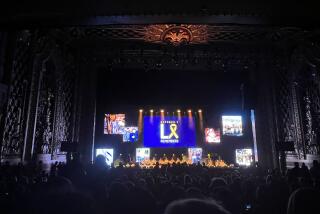Menorah Display OK Is ‘Outrageous’
- Share via
It is unfortunate that a bare majority of the all-Jewish Beverly Hills City Council has succumbed to pressure exerted by the Chabad sect of Orthodox Jews by again permitting the erection of a 28-foot Hanukkah menorah on public land adjacent to City Hall. (Times, Nov. 8). It is outrageous that the council’s three-member majority apparently based its decision on the flatly false claim that a menorah--the nine-branched candelabrum whose construction, mode of lighting and placement are all regulated in detail by the code of Jewish religious laws--is somehow not a religious symbol.
In an Oct. 16 letter to all members of the City Council, the American Jewish Congress explained that the U.S. Supreme Court had rejected the absurd claim that the menorah is a purely secular symbol of the eight-day Jewish festival. In its July, 1989, opinion in the Pittsburgh menorah/creche cases, the high court specifically declared: “The menorah, one must recognize, is a religious symbol; it serves to commemorate the miracle of the oil as described in the Talmud.”
Subsequent court decisions have built upon this foundation. In June of this year, the Supreme Court refused to review a federal appeals court opinion holding unconstitutional a menorah erected on public land within sight of the Burlington, Vt., City Hall--a case factually indistinguishable from Beverly Hills’ display. In addition, last Jan. 4, an L.A. Superior Court judge ruled unconstitutional the stand-alone display of a nativity scene in a public park across the street from the city of Downey’s civic center.
Chabad’s lawyer’s argument that the display of a menorah is justified because of the city’s “decorations on Wilshire Boulevard . . . (including) a Madonna and angels” is plainly wrong. To its credit, none of Beverly Hills’ city-sponsored holiday displays contain any such decorations. Indeed, Chabad’s menorah is the only religious symbol the city permits on government property.
On a more fundamental level, what message is sent by an all-Jewish city council that permits the semi-permanent display of a symbol of its own religion while not according similarly favored treatment to any other symbols? How many other government bodies will now choose to adopt policies that promote the religious practices or beliefs of their members?
DOUGLAS E. MIRELL
president, Pacific Southwest Region American Jewish Congress
More to Read
Sign up for Essential California
The most important California stories and recommendations in your inbox every morning.
You may occasionally receive promotional content from the Los Angeles Times.










